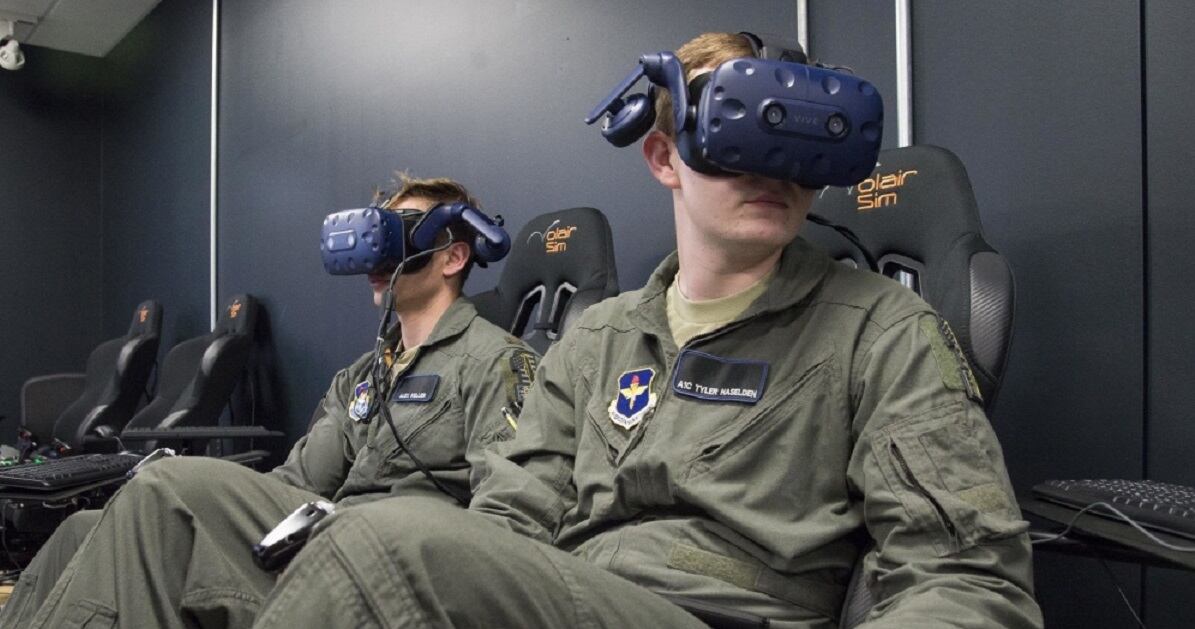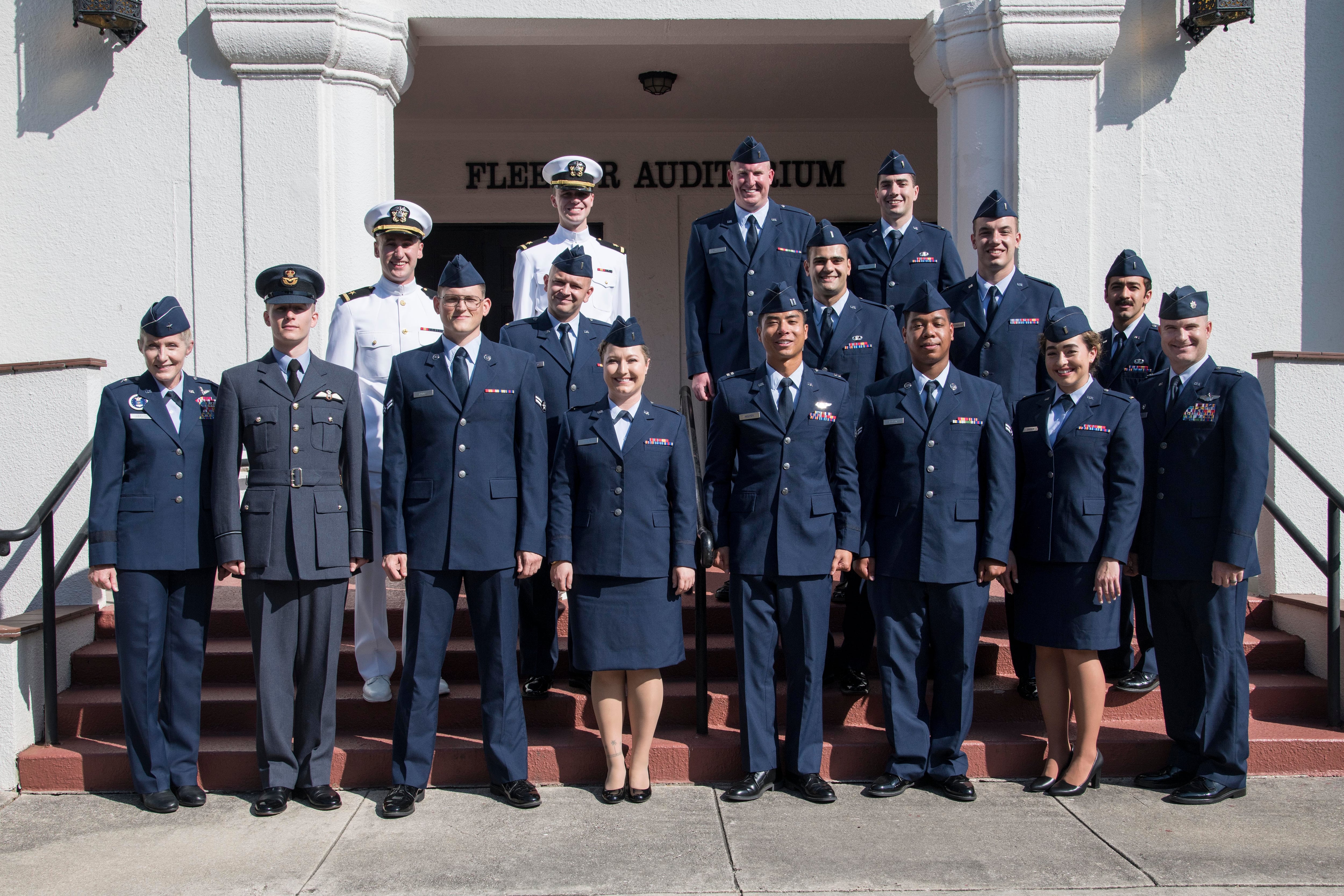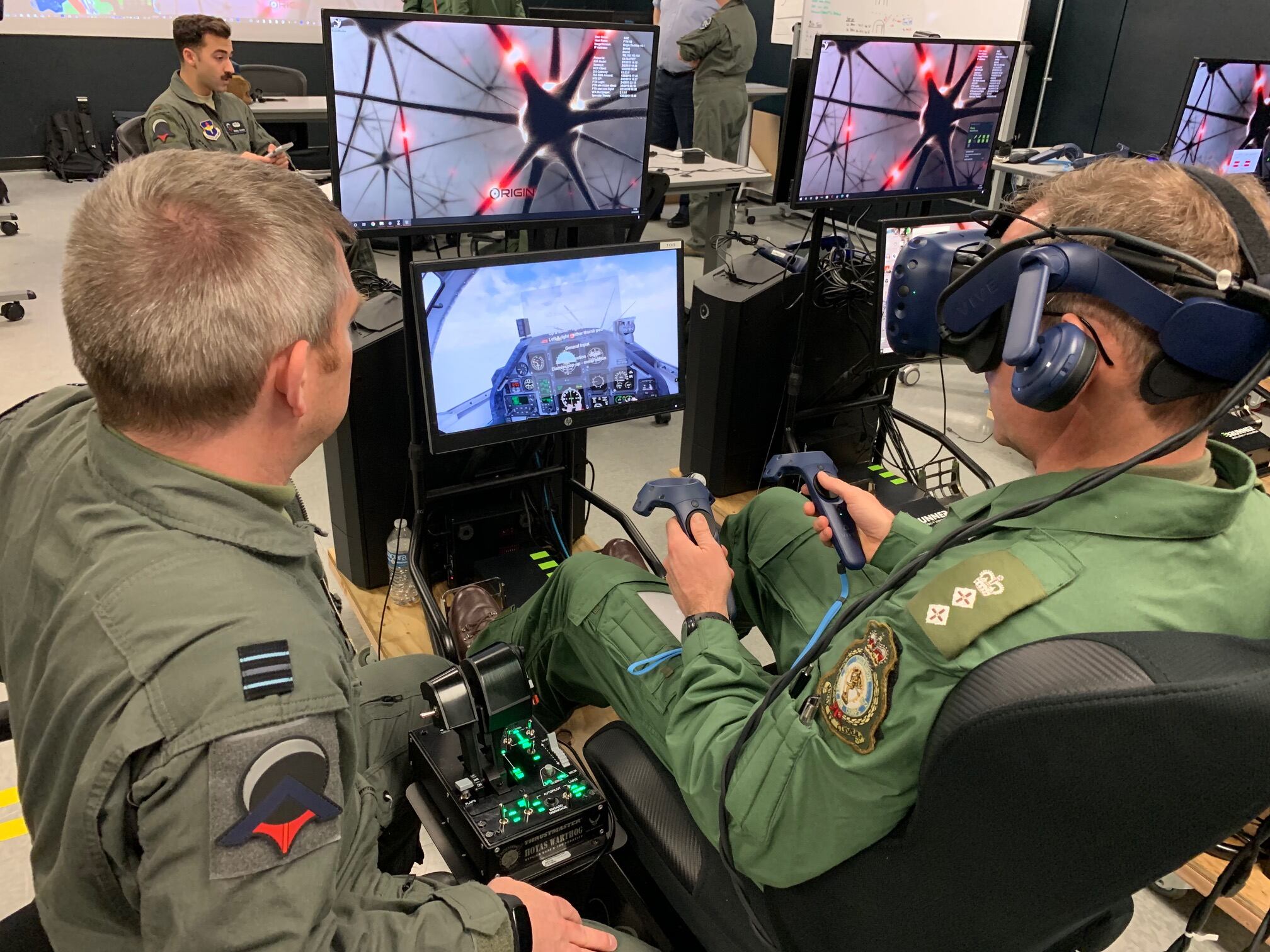Fourteen students graduated Thursday from the Air Force’s Pilot Training Next program, which includes using virtual reality systems to teach aspiring aviators to fly.
The latest class, which is the second iteration of Pilot Training Next and began this January, included some students from the U.S. Navy and the United Kingdom’s Royal Air Force.
In a Thursday release, the Air Force said the graduates include two Air National Guardsmen who were selected to fly airframes including the F-35 Lightning II, the F-15E Strike Eagle, the F-16 Fighting Falcon, the C-17 Globemaster III, the B-2 Spirit, and others.
The two Navy graduates will fly the T-45A Goshawk, and the lone RAF graduate will fly the Typhoon.
RELATED

“It definitely made the process more difficult having to push through burgeoning technology, but I am glad that I could be a part of the development process towards a more efficient and thorough version of learning for the future,” said 2nd Lt. Aaron Sless, a distinguished graduate of the program and winner of the Warrior Award, who is slated to become an F-35 pilot. “I am excited to see how PTN progresses technology and learning in the future and how it will be applied to undergraduate pilot training, and the Air Force at large.”

Air Force Recruiting Service Commander Brig. Gen. Jeannie Leavitt, who made history as the Air Force’s first female fighter pilot, said at the graduation that the students represent the future of aviation and are on the “leading edge” of a new way to learn to fly.
“The fact is, we are looking at a whole new way of learning in a non-standard way from the Air Force perspective,” Leavitt said. “Remember, dream big, be bold and learn to take calculated risk.”
RELATED

Pilot Training Next uses advanced biometrics, artificial intelligence and virtual reality systems to try to find ways to streamline how the Air Force trains new pilots. The program uses off-the-shelf VIVE Pro VR headsets and stations with sticks, throttles and other equipment to simulate virtual cockpit and practice maneuvers. The AI tracks students’ biometrics, including stress, to tailor the simulation environment and train them most efficiently. The program also includes time flying actual aircraft.
The Air Force’s first PTN class began in April 2018 in the Armed Forces Reserve Center in Austin, Texas. In May, the program moved to Joint Base San Antonio-Randolph in Texas.
The third class is scheduled to begin in January, the Air Force said.
The Air Force eventually wants similar VR training programs to more efficiently teach airmen to be maintainers or go through other technical training programs.
Stephen Losey is the air warfare reporter for Defense News. He previously covered leadership and personnel issues at Air Force Times, and the Pentagon, special operations and air warfare at Military.com. He has traveled to the Middle East to cover U.S. Air Force operations.




